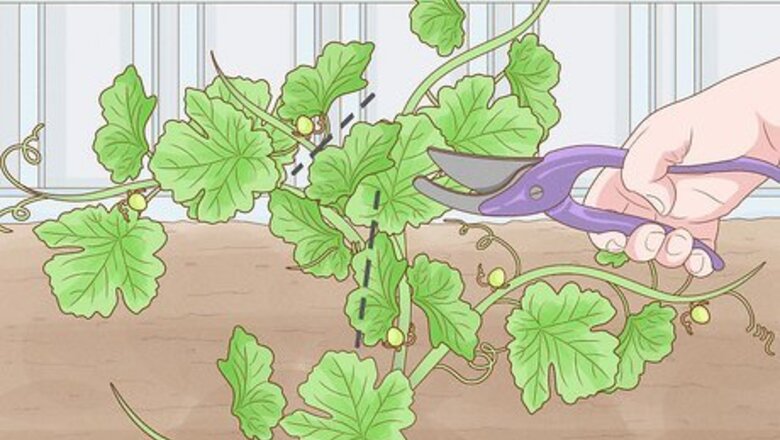
views
Part One: Transplant Pruning
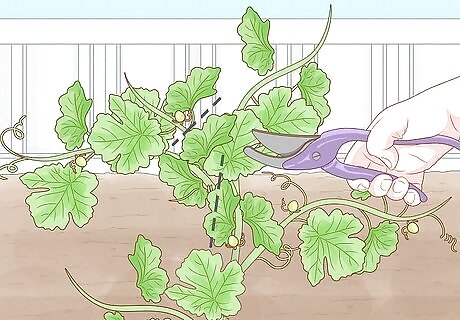
Reduce the shoots. If you purchase a new grape plant, you will likely find that it has a dense root system and many shoots rising out from the top. Immediately before transplanting the plant into your garden, you should cut the shoots off, only leaving the strongest intact.
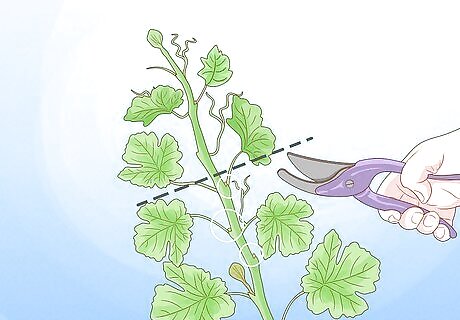
Cut back the buds. Look at the buds on your remaining shoot. Count off the lowest three buds, and cut the shoot back just above the third bud.
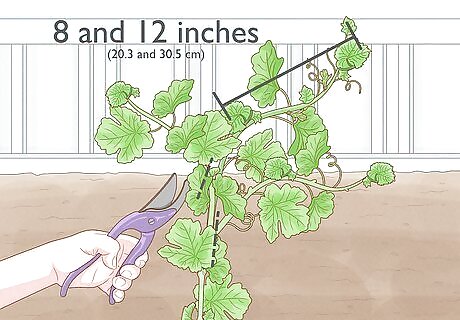
Remove all but one shoot after new shoots start growing. After you transplant the grapevine, new green shoots will begin to form. Once these shoots reach a length between 8 and 12 inches (20.3 and 30.5 cm), choose the best one and remove all the other shoots. The shoot should be strong and nearly upright, and it should also come directly out of your original stem. Do not choose a shoot coming out of the underground root system.
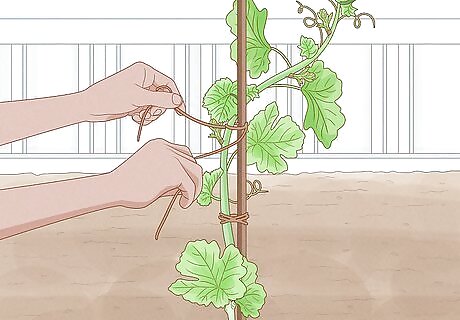
Maintain your main shoot. Support your remaining shoot by tying it to a stake or fence. Tie both the top and bottom of the shoot. Throughout this first summer, continue tying your shoot to its support system, keeping it as straight as possible. This shoot will act as the permanent trunk of your grapevine and will last throughout the duration of the vine's life.
Part Two: First Dormant Pruning

Verify that the your trunk is sturdy. Toward the end of your plant's first dormant season, check the previous year's growth. The vine should be about 30 inches (76.2 cm) tall. If the vine is not yet tall enough, cut it down to three buds again and repeat your initial pruning routine. This step is necessary if you want your grapevine to have a sturdy enough trunk to last over a long lifespan. Do this in February or March, just before the plant exits dormancy but after heavy frosts are over.

Trim down a healthy plant. If the trunk of your vine has just reached past a height of 30 inches (76.2 cm), locate the first bud positioned above that height. Cut down the top of the vine to a point directly above this bud. When done, tie the shoot to the vine's support system near the top of the vine.
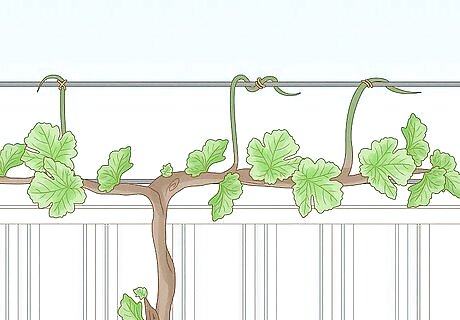
Prune especially vigorous vines differently. If the shoot is longer than 30 inches (76.2 cm), you should tie the vine to your support system at the 30-inch (76.2-cm) mark and count four or five buds above it. Bend down the remaining length so that it reaches your tie, and tie that in place, as well. If the shoot has already started to put out side laterals, choose the two laterals closest to the 30-inch (76.2-cm) mark and tie them down to your supports. Prune these down to three, four, or five buds. Tie the main stem to the support and cut it off just above the side laterals.
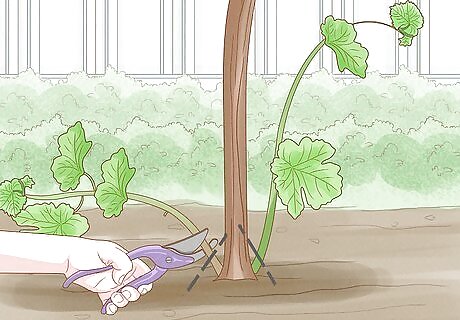
Maintain new shoots throughout the summer. Monitor any new shoots that form throughout the summer. Cut off any shoots that sprout from the root area or lower trunk. Good shoots should be trained throughout the summer. Tie them to your support system.
Part Three: Pruning Established Vines with Cane Pruning
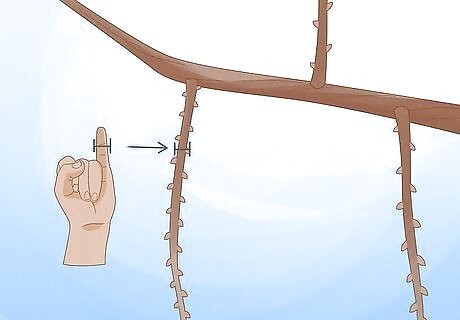
Select one or two canes. Choose two canes that are roughly the same thickness as your pinky finger. Ideally, they should grow as near to the head of the vine as possible, and the buds should be close together. The "head" of the vine is the point at which the trunk intersects with the top wire of your support system. The two canes should be positioned on either side of the trunk. These two canes will be your primary canes. During the following season of growth, they will grow new shoots that can bear fruit. Selecting canes close to the trunk head prevents the arms from becoming too long. Excessively long arms can create nonproductive gaps in the vine. Make sure that your chosen canes have firm wood with a brown outer layer of bark nearly all the way to the tip. They must not have any visible damage, either.

Trim the canes down. Prune your two chosen canes down so that only 8 to 10 buds remain. Tie the remaining portions of both canes to your support system.
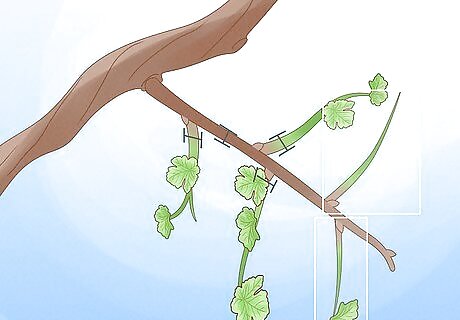
Set aside one or two spur canes. Choose four additional shoots that are thinner than your two primary canes. Trim these down to two buds each. These spur canes will act as sources of renewal during the following year's cane production. These shoots should all be close to your primary side canes.
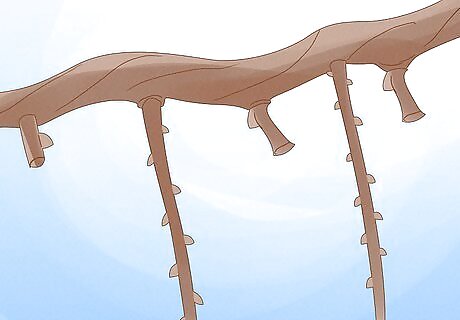
Cut away the rest of your canes. Remove any other cane not already selected by cutting it away at trunk level.
Part Four: Pruning Established Vines with the Cordon System
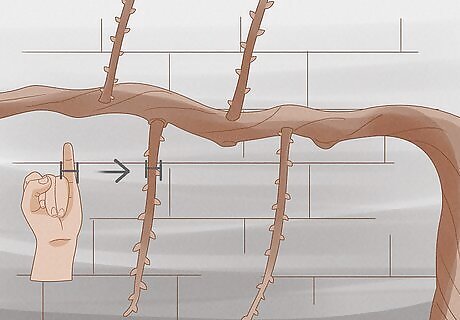
Select two canes. Choose one cane on either side of the trunk. The canes should be about as thick as your pinky finger and grow close to the head of the vine. The "head" of the vine lies at the intersection between your main trunk and the top of your support system. The canes you choose should have close buds and a brown outer layer of bark from base to tip. Make sure that they have not suffered any visible damage, either. Note that this method of pruning is not recommended for American grape varieties. It is suitable for use with most wine grapes, but you should do some research about your particular grape variety before you choose to use this method of pruning.
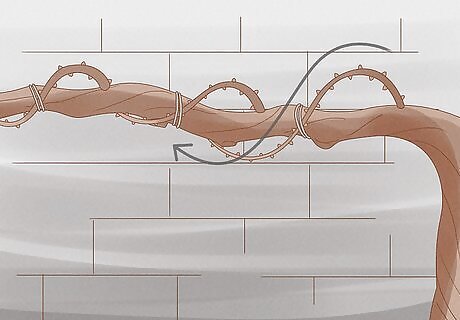
Train these canes to the side of the trunk. Bend the canes down to either side of your trunk and tie them in place. These canes will become permanent arms that will remain intact for the life of your vine.
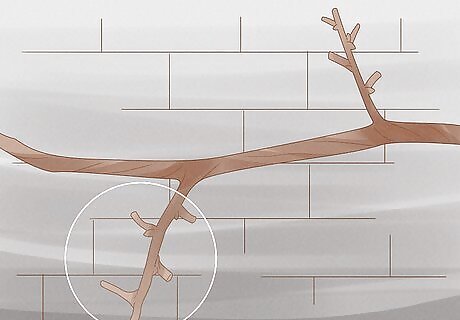
Shorten your fruiting canes. Cut off the top of both permanent fruiting arms, leaving only four buds on each arm.

Remove the rest of the old wood. Cut off the remaining canes at trunk level, leaving only your two permanent arms in place. This is the last bit of pruning you will do during the second year.

Cut back new spurs each year. During each following year, new spurs will grow on your permanent fruiting arms, and fruit will be produced from these spurs. Trim each new spur back during the end of the dormancy season so that they are only two to three buds long. As the vine ages, you may need to cut back older spurs to two buds, as well.
Part Five: Pruning Grapes on an Arbor

Follow the same initial steps. If you want to grow grapes on an arbor, you will need to follow the same transplanting and first year steps you would follow for standard grape vines grown on a trellis or fence. Grow one grapevine per post. If you have a two post arbor, grow two vines, training each one on a separate post. Grow four vines if you have four posts, or six vines if you have six posts. Allow the main trunk to grow to the top of your post during the first year. Tie or secure it to the post as it grows.
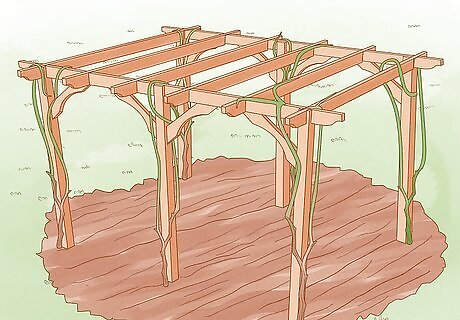
Allow branches to grow along the top. During the first winter, cut down the main trunk to a bud just above the top of the post. Allow any lateral side canes to grow on top of the arbor. Lateral side canes growing below the top of the arbor should be pruned down to trunk level.

Remove used canes. Any cane that produced fruit during the previous growing season should be cut off completely. While these old canes can remain on the vine without causing disease or damage, keeping them on the vine will cause dense shade to form with little to no fruit. You should also remove any weak, thin, or diseased canes, even if they have not yet produced fruit.
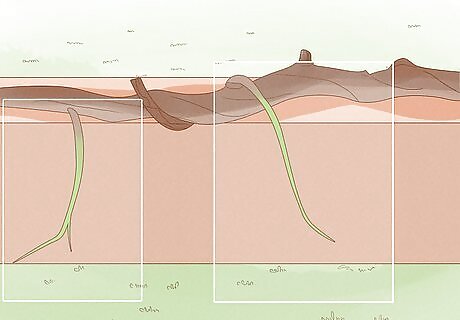
Leave several renewal canes. Select one to three healthy, used canes from each vine and trim them down to two or three buds instead of cutting them off completely.

Cut back the remaining canes. Canes that developed during the previous growing season should be kept, but you will need to cut them back to only five or six buds. Ideally, the canes on your arbor should be spaced 2 to 3 feet (60 to 91 cm) apart by the time you finish pruning. After your first two or three years, you should have a well-established set of vines that can fill in the arbor top by the end of your growing season without becoming hopelessly tangled.
Part Six: Pruning Shoots
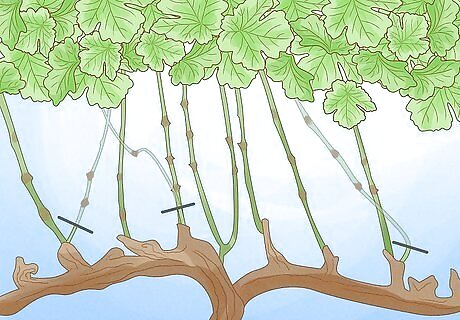
Thin shoots early in the growing season. All heavy pruning is done during the dormant season, but shoot trimming and training is done at the beginning of your growing system, usually in June. Grape shoots need to develop 14 to 16 well-exposed leaves for grape clusters to ripen, but if there are too many shoots clustered together, the leaves will not receive enough light. Thinning out your shoots early on can provide more light and more energy to the shoots you plan on maintaining.

Space your shoots apart evenly. There should be 3 to 4 inches (7.6 to 10 cm) of space in between your shoots. When done early on, you should be able to remove the shoots by hand. Use pruning shears to remove any shoots that you cannot twist off by hand.

Thin shoots down to one cluster. Each shoot should only have one fruit cluster on it. Trim the shoot down to a point just above that cluster. Note that the lowest cluster will usually ripen quickest. You might be able to leave multiple clusters on one shoot if the clusters are notably small.
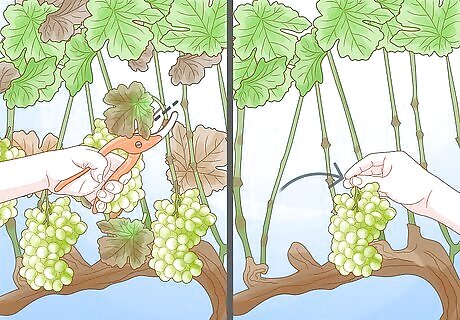
Remove the leaves before harvest. A few days before you intend to harvest your grapes, cut off the leaves surrounding your grape bunches. Doing so improves air circulation, thereby limiting the risk of disease. This step also allows the grapes to ripen more efficiently.


















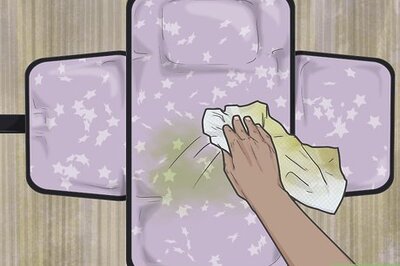
Comments
0 comment